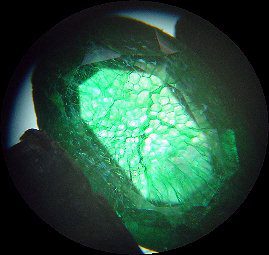Enhanced Gem Inclusions
Gem treatments can affect a stone’s value and stability. Learn how the most common procedures work and how to identify enhanced gem inclusions.
3 Minute Read
Related Articles
Pearl Treatments and Enhancements
Did you know that routine pearl treatments are the most common enhancements in the gem trade? Learn more about these...
Read More
Turquoise Treatments and Synthetics Guide
Almost all turquoises receive enhancements for jewelry use. Learn how to identify the most common turquoise treatments and synthetic options....
Read More
Corundum Treatments
Corundum gems receive more types of treatments than any other stones. Learn how to test rubies and sapphires for signs...
Read More
Spinel Inclusions
The materials trapped inside gems hold a wealth of information. Learn what the most common types of spinel inclusions reveal...
Read More
Latest Articles
Opal Buying Guide
Our opal buying guide can help you learn how opals are graded, what to avoid, and how to identify a...
Read More
Amethyst Sources Around the World: The Geological Story Behind These Purple Gemstones
Discover how amethyst forms in volcanic regions worldwide. Learn what makes Brazilian, Uruguayan, and other sources unique, and the geological...
Read More
Brazilianite Value, Price, and Jewelry Information
Brazilianite's lovely green to yellow colors make it a must for gem collectors. Large faceted stones are often flawed, but...
Read More
Ruby-Glass Composites vs Leaded Glass Clarity Enhancements
Ruby-glass composites and leaded glass ruby clarity enhancements are difficult for gemologists to detect. Learn how to identify these gems...
Read More
Never Stop Learning
When you join the IGS community, you get trusted diamond & gemstone information when you need it.
Get Gemology Insights
Get started with the International Gem Society’s free guide to gemstone identification. Join our weekly newsletter & get a free copy of the Gem ID Checklist!
